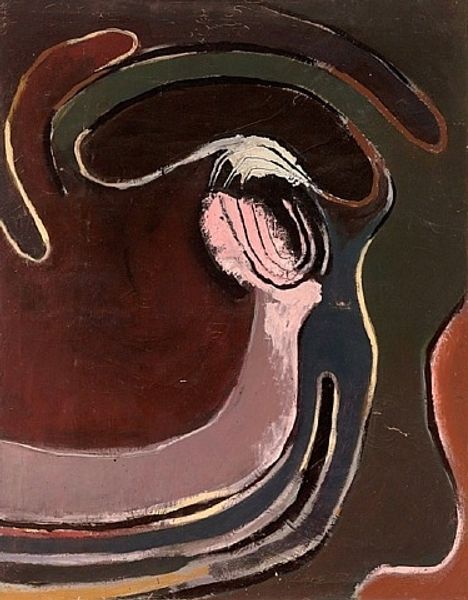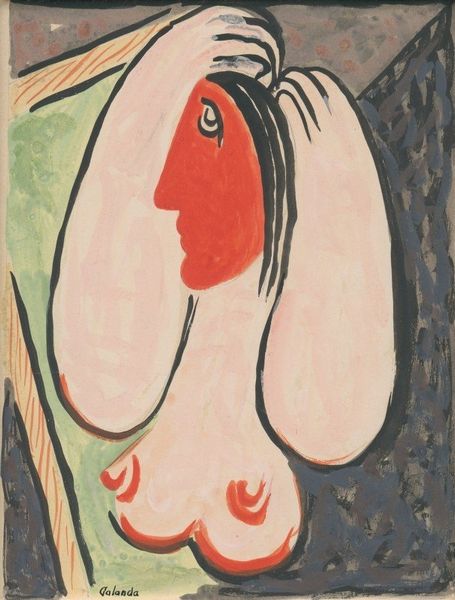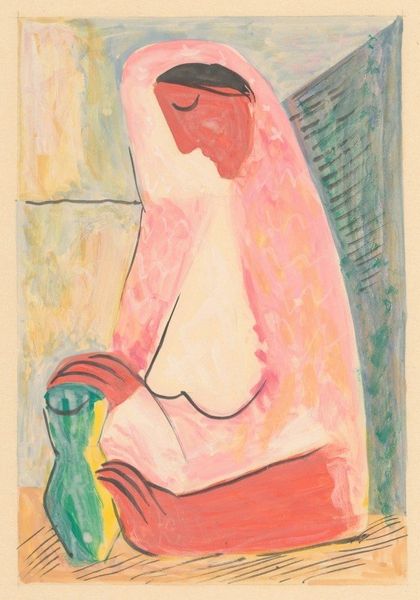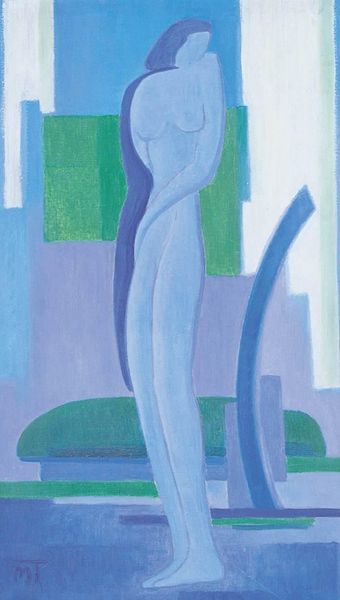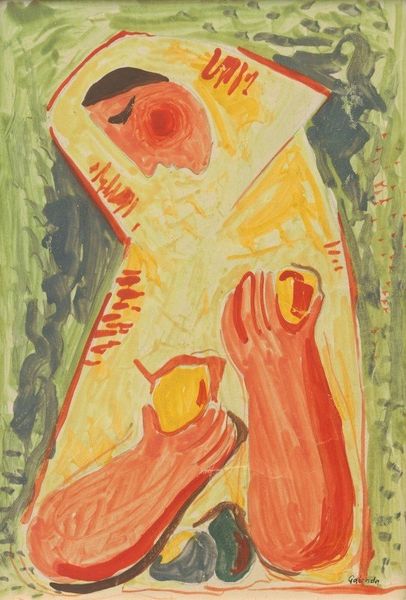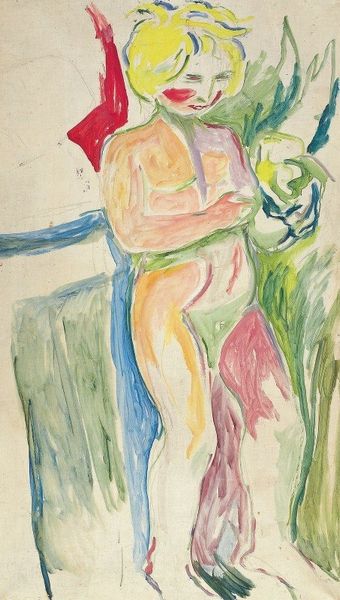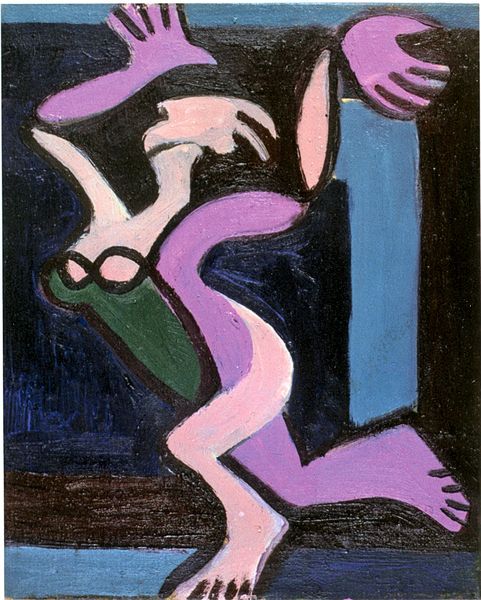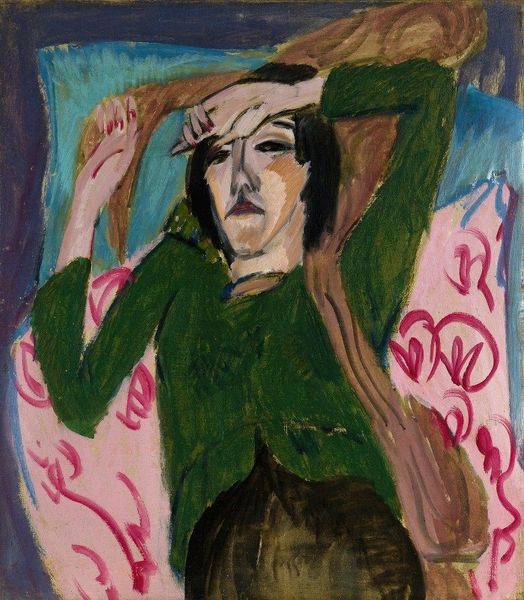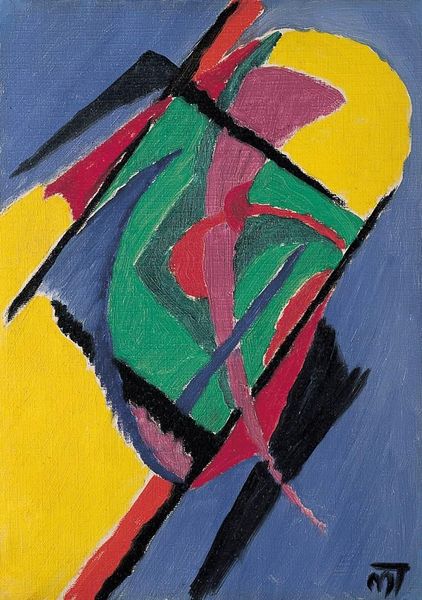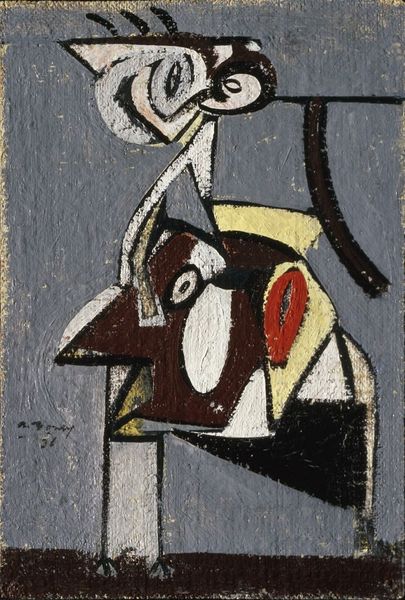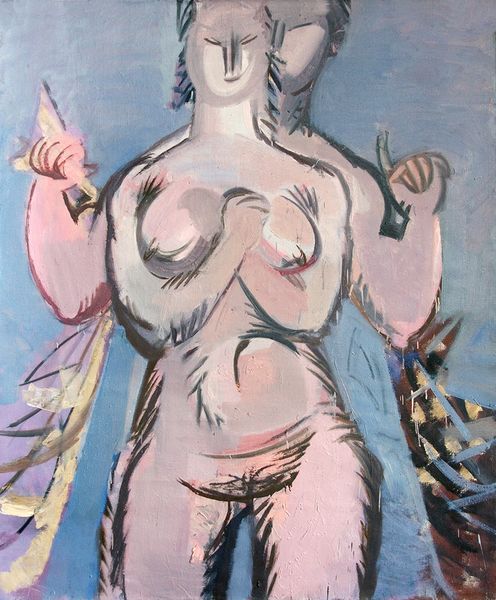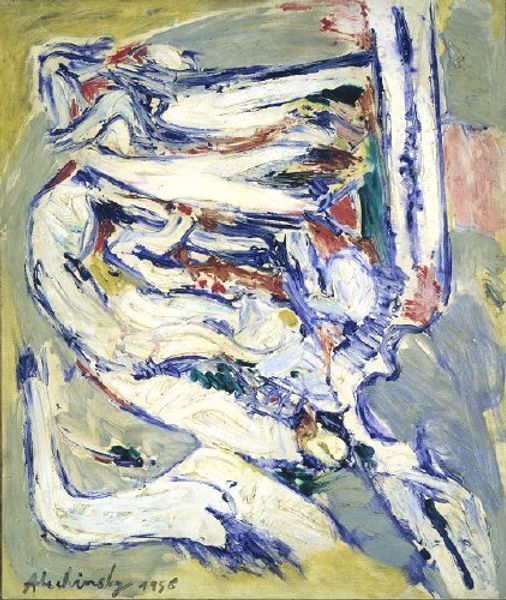
painting
#
portrait
#
figurative
#
painting
#
german-expressionism
#
figuration
#
expressionism
#
cityscape
Copyright: Public Domain: Artvee
Editor: Here we have Ernst Ludwig Kirchner’s “Dancing Couple in the Snow,” painted sometime between 1928 and 1929. It's oil on canvas, and the colors give me a feeling of chill, even with the implied movement of the figures. What strikes you when you look at this painting? Curator: Kirchner's work here exemplifies a crucial moment for German Expressionism as it navigates a post-war world. Considering the political and social landscape of the Weimar Republic, how do you see this "dance" as potentially reflecting the era’s anxieties or aspirations? Editor: Anxieties? It looks so carefree, almost whimsical. Curator: Exactly, the whimsical surface can be deceiving. The figures, rendered in his signature distorted style, are set against what appears to be a simplified, almost artificial, winter landscape. This begs the question: Is it a celebration of newfound freedoms, or a commentary on the superficiality of pleasure masking deeper societal problems? The jagged lines and disharmonious color choices contribute to this tension. How does the formal composition reinforce, or perhaps undermine, the theme of carefree dance? Editor: Now that you mention it, their embrace does seem forced, and the angular shapes don’t exactly scream "warmth." Perhaps the painting is hinting at something darker beneath the surface of ordinary life in the city? Curator: Precisely. Kirchner was deeply invested in representing the psychological state of modern life. His works served as a social commentary on pre-war, wartime, and post-war German culture, always through an introspective lens of an artist deeply struggling with the impacts of modern trauma. We must consider Kirchner's personal struggles, too. This period followed his time in the war, and this piece came several years before his tragic end. Editor: It’s incredible how much historical context can change your perception. I now understand that “Dancing Couple in the Snow” may communicate unease. Curator: Exactly, it moves beyond a simple joyful depiction. The piece's power lies in its complex representation of the artist's personal history of German socio-politics. The painting performs as a social commentary, one with varied avenues to interpret.
Comments
No comments
Be the first to comment and join the conversation on the ultimate creative platform.

